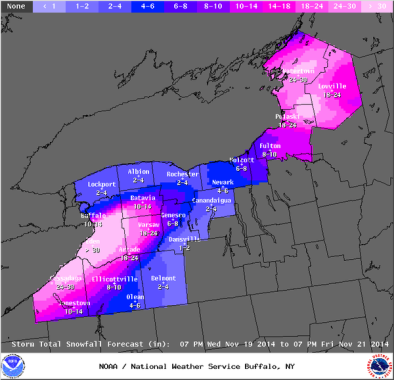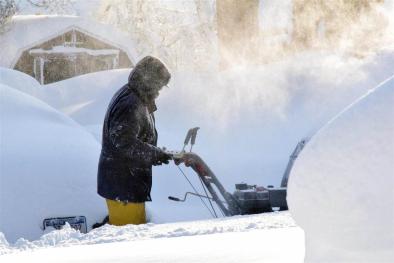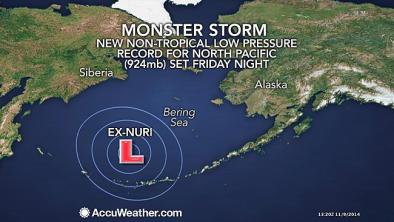Science Source
A new look at lake-effect snowfall trends in the Laurentian Great Lakes using a temporally homogeneous data set
- States snowfall data are subject to quality issues that affect their usefulness for detection of climate trends
- Looks at a new analysis of lake-effect snowfall trends that utilizes a restricted set of stations identified as suitable for trends analysis based on a careful quality assessment of long-term observation stations in the lake-effect snowbelts of the Laurentian Great Lakes
- Finds an upward trend in snowfall in two (Superior and Michigan) of the four snowbelt areas
- Finds the trends for Lakes Erie and Ontario depended on the period of analysis
- States that although these results are qualitatively similar to outcomes of other recent studies, the magnitude of the upward trend is about half as large as trends in previous findings
- Finds the upward trend in snowfall was accompanied by an upward trend in liquid water equivalent for Superior and Michigan, while no trend was observed for Erie and Ontario
- Finds air temperature has also trended upward for Superior and Michigan, suggesting that warmer surface waters and less ice cover are contributing to the upward snowfall trends by enhancing lake heat and moisture fluxes during cold air outbreaks
- States a more comprehensive study is needed to definitely determine cause and effect
- Finds, overall, that trends in lake-effect snowfall are not as large as was believed based on prior research
Related Content
Science Source
| Geophysical Research Letters
Distinctive climate signals in reanalysis of global ocean heat content
Balmaseda, Magdalena A., Trenberth et al
Headline

Feb 15, 2016 | MPR News
Buffalo mega snowstorm tied to climate change?
Headline

Feb 15, 2016 | NBC News
Freezing on East Coast? Blame a Super Typhoon and Maybe Global Warming
Headline

Feb 15, 2016 | AccuWeather
Monster Storm Becomes Strongest on Record for Alaska


